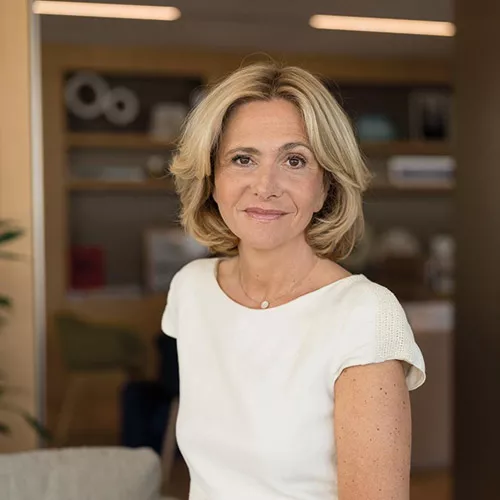Valérie Pécresse: “Transform the Paris Region’s mobility network into the world’s best by 2030”
The President of the Paris Region’s mobility authority thanks SNCF teams for their contribution to 2024’s transport successes and shares her vision for the future.
SNCF Group: How important is public transport to the inhabitants of the Paris Region?
Valérie Pécresse: Trains in the Paris Region are synonymous with daily commuting. They represent public service at its finest, helping over 9 million people a day reach their destinations—whether it’s school, university, work, sports clubs, or leisure. From early in the morning to late at night, seven days a week, train and RER services weave a vital connection between central Paris and the region’s farthest, most rural communities.
SNCF Group: Why was developing the Paris Region’s transport infrastructure so important?
V.P.: The Paris Region’s transport network had suffered from chronic underinvestment. That’s why, as soon as I was elected in 2016, I launched a plan to transform it. My goal was to make the Paris Region’s mobility network the best in the world by 2030—an ambitious goal, but one I stand by.
To do so, we’ve tripled investment in mobility to ensure a reliable, modern, comfortable and accessible transport system. We’ve started renewing trainsets and already have over 1,000 new or renovated trains and RERs. In 2024, we also introduced the RER NG, a next-generation trainset designed specifically for the Paris Region. It first operated on the RER E line and has now expanded to the RER D line.

We are a demanding contractor, but we also believe in recognizing great work—so a huge thank you to the SNCF teams for their efforts!
President of the Paris Region
SNCF Group: Many public transport service projects were completed in 2024, ahead of the Paris 2024 Games. Looking back, what lessons did you learn from that period?
V.P.: The year 2024 marked a turning point in the transport revolution. As a region, we rose to the challenge of the Olympic and Paralympic Games, earning unanimous praise—both nationally and internationally—for the quality of our transport services. I’d like to acknowledge SNCF‘s role in this success and thank its teams for their efforts. Last year also marked the completion of major infrastructure projects, including the long-awaited extension of the RER E line to Nanterre, west of Paris. This technically complex extension now links Seine-et-Marne in the east to the city’s western suburbs, making life significantly easier for tens of thousands of commuters. But it’s more than just a local improvement—it has also strengthened Paris’s connection to the rest of Europe. Travellers arriving at Paris-Nord station from London, Brussels and Amsterdam can now reach La Défense and Porte Maillot (western Paris) in just a few minutes by RER commuter train.
None of that would have been possible without SNCF Group and its subsidiaries (Transilien, SNCF Réseau, Gares & Connexions). I know their teams work tirelessly every day, going all out to ensure smooth operations and technical excellence in every project. We are a demanding contractor, but we also believe in recognizing great work—so a huge thank you to the SNCF teams for their efforts!
SNCF Group: What do you expect in the next phases of the network’s expansion?
V.P.: The RER E line will continue its extension to Mantes-la-Jolie (about 50km west of Paris), easing congestion on other lines, such as the RER A. Upgrades to the northern stretch of the RER B will proceed gradually, allowing the introduction of new trains. Work is also underway to modernize the Charles-de-Gaulle Express, enhancing connections to Charles de Gaulle Airport. Beyond these projects, we’re pushing forward with extensions of metro lines 15, 16, 17 and 18, developments that will double the size of the existing network and create stronger links across the Paris Region. We’re on track to transform the Paris Region’s transport network into a global benchmark by 2030. But achieving this requires continuous effort. Île-de-France Mobilités will continue to act as the transport organizing authority, maintaining sustained levels of investment and upholding the highest standards in infrastructure modernization.
This transformation will also reshape things for transport operators as it opens the market up to competition. Île-de-France Mobilités has been preparing for this shift for years, setting stringent specifications that include unique social clauses and high service quality standards. Looking ahead, commuters will benefit from a more integrated, multi-operator network with a simplified ticketing system—allowing seamless transfers between different operators and transport modes with a single rail ticket.
Delivering a world-class transport experience means ensuring every journey is clean, safe and reliable, and that passengers are kept well-informed at all times. It’s a collective challenge that demands innovation, collaboration, and a willingness to revisit existing practices. We all need to go the extra mile, thinking outside the box and working together to ensure smooth operations across all transport providers.
Share the article